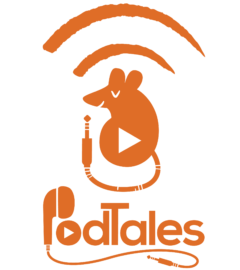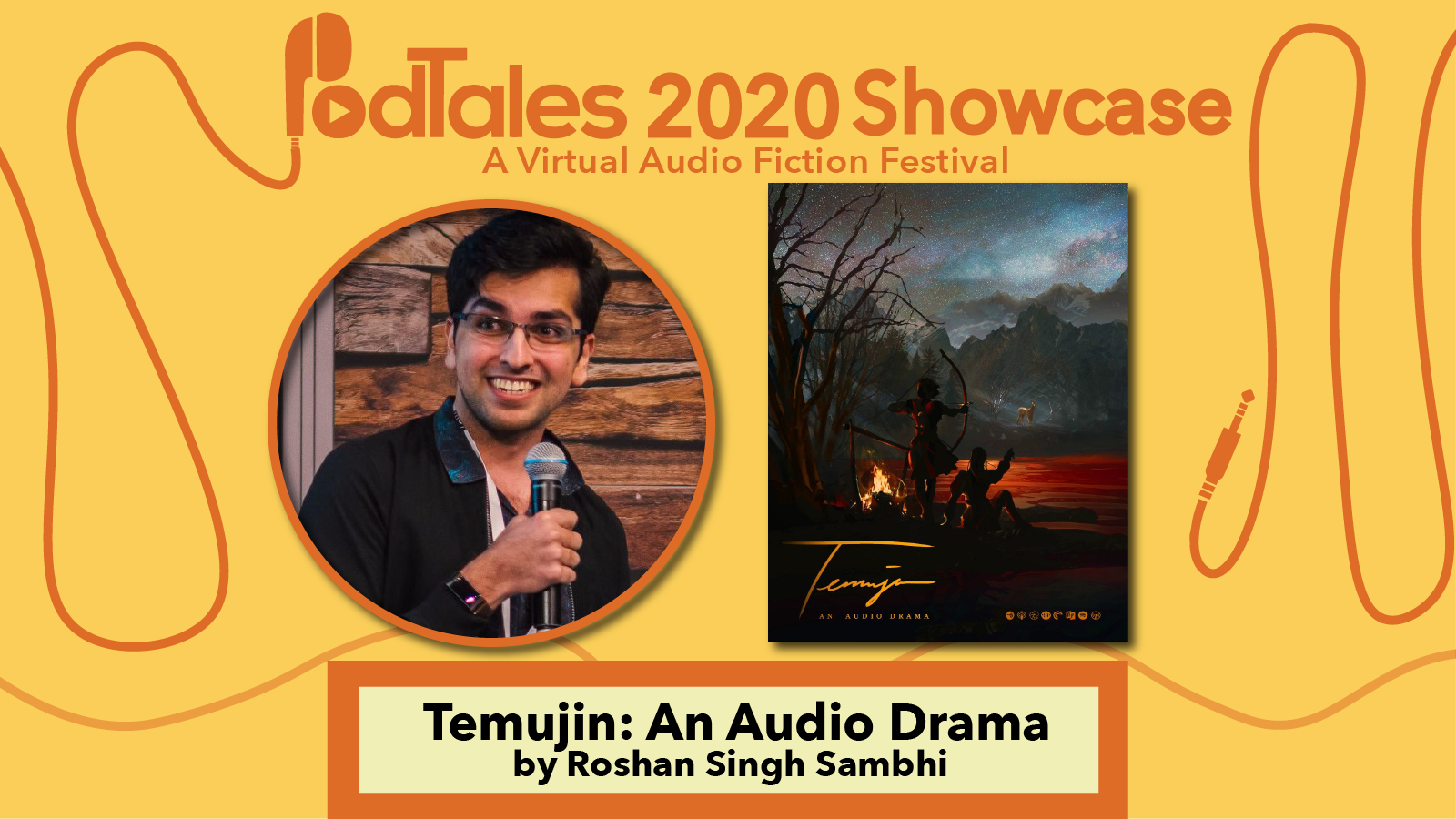LampLight Radio Play- Apex Predator
Description: Inspired by the radio of the past, but built for modern ears, LampLight Radio Plays are audio adaptations of stories from LampLight Magazine. Expect great performances, naturalistic sound design, and immersive stories to unsettle and entertain.
Connect with the show!
Learn more about the show on their website: https://lamplightmagazine.com/radioplay/
Follow LampLight on Twitter: https://twitter.com/lamplightmag
Follow LampLight on Facebook: https://www.facebook.com/lamplightmagazine
Support the show!
Subscribe to LampLight Magazine: https://apokrupha.com/product/lamplight-subscription/
Leave them a review on Apple Podcasts: https://podcasts.apple.com/us/podcast/lamplight-radio-play/id1156281325
Leave them a review on Podchaser: https://www.podchaser.com/podcasts/lamplight-radio-play-414225
Transcript
LampLight Radio Play
“Apex Predator” Transcript
Radio Play written by Andrew Wardlaw
Based on the short story by Samantha Rich
ANNOUNCER
This is the LampLight Radio Play.
INT. A TED TALK – DAY
An audience is APPLAUDING. It slows to a stop, the crowd
hushes.
TED TALKER
Human beings, in general, have a very
poor understanding of life, as a
phenomenon.
If you’re like most people, when I say
“Life on Planet Earth,” you probably
think of things like…
(Click on a slide)
..lions and elephants, right? But
these big terrestrial mammals are
actually so rare…we build entire
tourism industries around them. That
awkward kid on the right is me, by the
way.
Another chuckle.
TED TALKER (cont’d)
(Another slide)
If I ask you to think of lifeforms
beyond the most obvious, you’ll
probably think about snakes and
reptiles, or fish, or bugs–Oh, yeah,
remember them? There’s an estimated
six to ten million species of insect
on our planet.
(Another slide)
That’s a photo of an ant hill in the
United Kingdom. Five and half feet
tall, half a million creatures live in
there.
(Another slide)
And plants are alive, of course. Now,
if you’re clever, when asked about
animals you go:
“Wait! Humans are animals!”
And you’d be right, we are animals, as
any parent of a teenage boy can tell
you.
Laughs.
TED TALKER (cont’d)
And speaking of teenage boys…
(another slide)
…bacteria are lifeforms.
More laughs.
TED TALKER (cont’d)
But what we almost all forget are
these guys…
(another slide)
That is a fungus. Fungi are one the
great mysteries on our planet. We tend
to think of fungi as plants, but
genetic studies show they have more in
common with animals.
EXT. MALHUER NATIONAL FOREST – DAY
A quiet forest. A MYCOLOGIST (A person who studies fungi) and
a REPORTER walk through the woods.
MYCOLOGIST
This is Malhuer National Forest, in
Eastern Oregon.
Footsteps.
MYCOLOGIST (cont’d)
It’s a long commute, but the scenery
is great.
EXT. MALHUER NATIONAL FOREST – LATER
They walk a bit further.
MYCOLOGIST
Here ya go. See those right there?
Those are “Honey Mushrooms.”
The caps are small, but the rest of
the fungus is underneath us. It’s
these little black strings called
rhizomorphs, and they stretch out and
out and out. They are really quite
long, actually.
Well, we think this particular one
covers 3.4 square miles. It’s the
largest living organism on Earth. Most
of the time it’s just hanging out,
waiting until the conditions are
right. Then these little caps pop up
in the autumn and eat up the dead
trees. The rest of the year, it’s just
sitting there, waiting.
REPORTER
That’s a lot of waiting.
MYCOLOGIST
It’s pretty cool!
EXT. SCHOOL YARD
Kids playing in the distance. An on-the-street interview.
DOCTOR
The best estimates put the number of
human children that are living today
around 1.8 billion. And they are needy
little things, aren’t they? It takes a
lot of work to get a child all the way
to adulthood.
INT. DOCTOR’S OFFICE
DOCTOR
Hey, Dillon, good to see you buddy.
Six years old now. How about that?
DILLON
Hi.
DOCTOR
Okay, now…can you open your mouth?
Really wide so I can see the back of
your throat.
The check up continues, plays under the following narration:
DOCTOR (V.O.)
They eat a lot, we have to teach them
a lot. And their lungs and respiratory
tracks are prone to infection.
DOCTOR
(scene)
Now I’m going to put this under your
shirt, it may be a little cold.
DOCTOR (V.O.)
Well, at least from a medical
perspective we do a job.
DOCTOR
(scene)
Deep breath in.
Dillon takes a deep breath.
DOCTOR (cont’d)
(scene)
Very good.
DOCTOR (V.O.)
We have plenty of food to keep them
fed, we can treat most diseases, we
have car seats and fire resistant
pajamas and couches…
DOCTOR
(scene)
Now can you give me a cough?
Cough cough.
DOCTOR (cont’d)
(scene)
Great. All done.
DOCTOR (V.O.)
The result is almost all of our kids
make it to adulthood.
DOCTOR
(scene)
…your vaccines are up to date, and
we’ll see you in a year.
PARENT
Thank you very much.
DILLON
Can I please have a lollipop?
DOCTOR
Absolutely, just ask the front desk.
PARENT
Say thank you.
DILLON
Thank you.
INT. TED TALK
TED TALKER
So you’re probably familiar with the
term “Apex Predator.” No natural
predators, top of the food chain. “The
Kings of the Jungle…”
Even though we tend to think of
humanity as separate from nature, even
“above” nature, we humans also
consider ourselves Apex Predators.
But the term “Apex Predator” doesn’t
tell the full story. Parasites, for
example, can devastate a population,
but aren’t considered predators.
EXT. MALHUER NATIONAL FOREST – DAY
This is an “On The Fly” interview.
MYCOLOGIST
There’s a fungus that lives in the
tropical forest of Brazil called
“Ophiocordyceps Unilateralis” And if
you can’t remember that, just google
“Zombie Ant Fungus.”
INT. INTERVIEW MONTAGE
This is inter-cut with the Mycologist, on location.
EVOLUTIONARY SCIENTIST
Ophiocordyceps’ life cycle begins when
its spores land on ant. The spores
burrow through exoskeleton, and as it
spreads through the ant, it starts
influencing its behavior.
MYCOLOGIST
It basically hacks into its nervous
system. So the ant just starts
walking. It walks out of its nest in
the tree canopy, falls to the ground,
and just ambles about for a bit.
EVOLUTIONARY SCIENTIST
Then, precisely at solar noon, it has
the ant climb up the stems of a nearby
plant, to a precise height of twenty-
five centimeters.
MYCOLOGIST
The ant will climb up the nearest
plant and bite down on a leaf hard.
Hard. And then the ant stays there
until it dies.
EVOLUTIONARY SCIENTIST
Then the fungus starts fortifying its
position. It attaches the ants body to
the stem, it secretes antimicrobials
to keep away other invaders. About
five days later, a tendril of fungus
blooms from the ant’s head, and from
the tip it drops its spore to the
ground.
MYCOLOGIST
When you watch a timelapse of it, it
looks like a little worm popping out
of the ant’s head. And that’s how it
spreads to all the other ants…
because an ant colony is a great
place for a parasite. Thousands of
hosts, living in tight corridors.
EVOLUTIONARY SCIENTIST
Everything about this is very precise.
The way the ants move around the
forest floor, how they climb to twenty-
five centimeters, how at solar noon
that switch flips…every part is
perfect for Ophiocordyceps. And the
fungus can wipe out an entire colony.
INT. A TED TALK
TED TALKER
Did you know that Humans share roughly
one third of their genes with ants?
One third. Amazing.
EXT. PORT OF LOS ANGELES – DAY
Diesel. Machinery.
ECONOMIST
The Port of Los Angeles.
18 percent of the country’s imports,
right here, in LA. We call them
container ships. This is where it gets
taken off the boats and put on trucks
and trains, and transported across the
country.
See those skinny things driving around
over there? Those are actually forty-
five foot tall robots. Driverless
cargo carriers.
Humanity spread across the earth a
long time ago, tens of thousand of
years. What’s changed over the past
few hundred years or so is how
interconnected we’ve all become.
Designed in California, made in China,
sold literally everywhere. Iceberg
lettuce used to be considered a
delicacy, now we have it in winter.
There’s always going to be things that
slip through the cracks. You know,
we’ve had four hundred years of
quarantine laws, and rules and
regulations things like that, but we
still get pests and rodents and
diseases that manage to slip across
international lines.
INT. INTERVIEW
EVOLUTIONARY SCIENTIST
Globalization isn’t just about boats.
We’ve had to coordinate on global
level, and as we’ve opened trade,
we’ve also reduced quarantine rules.
So the result is, humans aren’t the
only life forms that travel.
EXT. EVERGLADES — NIGHT
A diesel pick-up idles near by.
PYTHON COWBOY
So I’ll show you how well they
camouflage. Come over here. See him up
in there? I almost didn’t see him, I
just saw a little bit of shine through
the grass…sure enough it’s a, it
looks like a good sized python.
We’re gonna see what we can do with
this guy.
SPLASHING. HISSING. We hear him wrestling with a python.
PYTHON COWBOY (V.O.)
My name’s Trapper Mike, I’m known as
the Python Cowboy. I sleep out in the
Florida Everglades and I hunt big-ass
snakes.
PYTHON COWBOY
(Scene)
Look how beautiful. And that’s that.
Let’s get a bag, and go get the next
one.
PYTHON COWBOY (V.O.)
The Burmese Python has decimated
ninety-nine percent of our native fur
baring wildlife. And that’s a big
issue out here in the Everglades.
PYTHON COWBOY
(Scene)
Whew! This one had a little bit of
fight in it, huh?
INT. COLLEGE LECTURE HALL
A BIOLOGY PROFESSOR is teaching a large undergrad class.
BIOLOGY PROFESSOR
Evolution isn’t constant. Most of the
time, an ecosystem is stable and the
species don’t change much. We call
that “Evolutionary Stasis.” Everyone
follow? A species is stable, most of
the time, until a disruption comes
along, and then it evolves quickly.
So are we, people, all of us in this
room, are we in evolutionary stasis?
It seems like it, doesn’t it?
INT. INTERVIEW
EVOLUTIONARY SCIENTIST
We people like to think we’ve out
maneuvered nature, but I think it’s
like a guerrilla war, nature vs
Humanity.
Nature has so many ways to keep life
in balance. Predators exist for each
type of prey. If predators can’t keep
a population in check, then there may
be a food shortage, or disease.
I guess because Nature came first,
Humanity is the guerrillas. We’re
improvising our tactics on the run.
Or maybe, Nature is the guerrilla
army. Laying in wait for the right
opportunity.
INT. FINAL MONTAGE
This a mix of lines we’ve heard before, plus some new ones.
TED TALKER
The term “Apex Predator” doesn’t tell
the full story.
BIOLOGY TEACHER
The lifeforms that happen to have the
right mutations can just grow and grow and
grow.
MYCOLOGIST
An ant colony is great for a
parasite…thousand of hosts, living
in tight quarters.
ECONOMIST
Three point seven billion people live
in cities.
TED TALKER
Fungi are more closely related to
animals than plants.
EVOLUTIONARY SCIENTIST
The designated time of solar noon
remains consistent through the
transition.
DOCTOR
(talking to kid)
Can you open your mouth, really wide
so we can see the back of your throat.
EVOLUTIONARY SCIENTIST
Rows of little bodies standing silent
beneath the sun…
DOCTOR
Now big breath in.
Dillon inhales.
EVOLUTIONARY SCIENTIST
…going still for a time…
DOCTOR
Another one. Big breath in.
Dillon inhales again.
EVOLUTIONARY SCIENTIST
…then blooming.
DOCTOR
(talking to kid)
Now can you give me a cough?
Cough, cough.
FADE OUT:
HOST: That was “Apex Predator”
Based on the story by Samantha Rich, found in Volume Seven, Issue Four.
Featuring the acting talents of
Jamal Douglas
Jesse Marion
Bryarly Bishop
Mike Gagne
Emma Sherrziarko
And the audio of the Python Cowboy came from iWonder TV, a youtube channel of documentaries of many fascinating people. You can follow The Python Cowboy on Instagram.
Adapted and Produced by Andrew Wardlaw
One of the striking things about this story is its form, nearly a scientific paper, and how it grows, each section building off the one before it taking you towards its goal–something it does with no characters, no plot to speak of. When we translate this into audio we use forms specialized for this: TED talks, documentaries, moments building a pyramid of facts stretching towards the inevitable.
You can find more stories like this in the pages of LampLight magazine. You can get a subscription on our website and we will send ebooks to you inbox or Kindle. Your subscription supports both the magazine and the podcast.
I’m Jacob Haddon, editor of LampLight magazine
The LampLight Radio Play is produced by Andrew Wardlaw and myself.
You can follow us on iTunes, Soundcloud, Spotify, or direct on the website. lamplightmagazine.com
See you next time.




